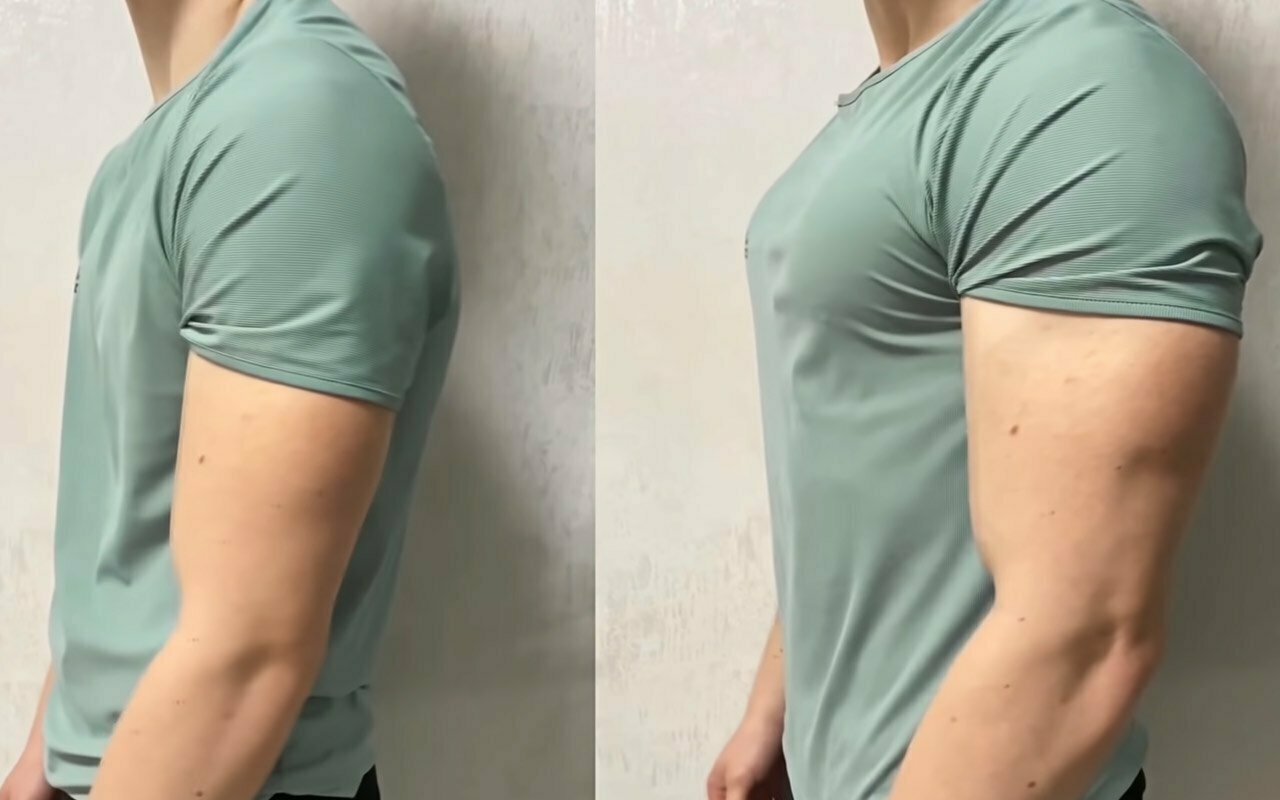It takes time to build a bigger chest. To really increase your chest size, you need to put in the effort and do the right exercises. To build and maintain muscle mass, it is important to eat well, allow for recovery, and get enough sleep each night. You can gain more muscle mass by working the muscles slowly and extending muscle activation.
Many bodybuilders and weight lifters have trouble finding the right way to increase their chest size. While some people have symmetry issues, others struggle with man boobs despite exercising. People want to be able to gain bigger arms and chests in a matter of days. Unfortunately, there’s no magic bullet to build your chest muscles in as little as a week or even thirty days.
You may be able to achieve more muscle thickness if your pecs are already strong. However, don’t expect to see any immediate results. Increasing your chest muscles in the right way takes dedication and time.
Keep reading if you are interested in a bigger chest and are ready to work hard. We’ll be discussing how to increase your chest size using the right exercises.
- Get a bigger chest without or with equipment
- Some tips from past Mr. Olympia champions for chest day
- For overall symmetry, targeted exercises are done to target different parts of your pecs.
- There are other ways to improve your chest.
- Here’s a winning exercise to get you started
It’s no longer enough to just repress your feelings. You need to be more scientific about your workouts if you want to have a bigger chest.
While most men hit the bench (and do almost nothing else) to build a bigger chest, our workout takes a smarter approach and fuses two scientifically-tested workouts to add size to your pectorals faster than ever. You’ll see results in no time if you alternate between the two sessions.
How to get bigger pecs? Do you want to focus on nutrition or only exercises that build chest muscles? Is there a way to increase your chest size without using the equipment? This article will show you how to get bigger chests quickly.
Table of Contents
How to get a bigger chest?
You might be wrong if you think you can quickly build a bigger chest. Reaching the Golden Era level of definition takes patience and hard work. They usually did one chest day per week, and no more than two.
To get bigger pectoral muscles, start by doing exercises that target your chest. Some of the best chest exercises for strength and shape include: Incline push up, Flat bench press, Incline bench press, decline bench press, pushup, chest dip… These exercises are all focused on building muscle mass.
When you do these exercises, your pectoral muscles will be working as hard as they can, so it’s important to rest for a few days to allow them to recover before continuing with the workout.
Spending time at the gym is an absolute must. To build your chest muscles and improve your overall physique, this is not enough.
Also, you will need to:
- Make sure you eat the right foods and avoid the wrong ones.
- Sleep enough each night.
- You should allow at least two days for recovery between each session. This will ensure that you don’t work your chest more often than three times per week.
- You can avoid injury by working out properly.
Tips for a bigger chest
In addition to having chest-building exercises, and a scientific workout plan, here are some tips for a bigger chest.
Eat the Right Foods
It’s been said before and we will repeat it again. Fitness is more than just exercise. It’s not something you want to hear, but it is true.
You must start cooking if you want to build your chest and tone your muscles. These are the foods you should be eating.
- Vegetables (lots and lots of them)
- Fruits
- Whole grains
- Lean meats
- Nuts and seeds
- High-quality fish
Avoid high-glycemic foods, but white rice can be used as a pre-workout meal. It can fuel your workouts and help with muscle recovery afterward.
High-protein foods are also a good choice to fuel your workouts and keep you satisfied. Studies show that protein is eaten before bed can speed up post-exercise recovery.
Sleep enough
People are often busy and sleep can suffer. You must prioritize sleep if you want to see serious results at the gym.
The body loses the necessary hormones to repair muscles when it is not getting enough sleep. This can cause an inflammatory response that may hinder muscle recovery.
According to some studies, athletes need at least 10 hours of sleep per night. Professional athletes, including bodybuilders, need to sleep more than the average person. Insufficient quality sleep can have serious consequences for their sport.
- Time to react
- Accuracy
- Slower swim turns
- Submaximal strength
- Cognitive function is reduced
Recovery Days
You are pushing your muscles too far if you exercise properly. This means that your muscle fibers are being ripped and will need to rest before you can work them again.
Do you think recovery days are only for the weak? You’re wrong. You should think again. Recovery days are where your muscles grow their mass and not when you go to the gym.
You are at risk of serious injury if you don’t allow your muscles to recover. You could lose your pec muscles and be out of the gym for several months. You’ll then need to rebuild your chest muscles.
Your sleep quality will also suffer. We just learned why you need to get as much sleep as you can. Your adrenals will get tired and produce more cortisol. This is not good news if you don’t want to gain weight.
We are sure you will get rest after your next chest day. You don’t have to go to the gym if you do not feel like working out. Instead, work on your lower body between chest days. You won’t regret all the hard work you put in.
Proper form is crucial
You will not be able to gain any benefits without proper form.
You don’t want to be the guy at the gym who doesn’t know their stuff. You will be successful if you have confidence and the right knowledge. If you need to, practice your form.
You might consider hiring a trainer or spotter to help you get the hang of it until you feel confident. Also, you can practice with either an unweighted dumbbell or a dumbbell of the lowest weight.
Heavyweights can be quite intimidating, especially if you don’t do the exercise properly. Keep them for later, when you are in perfect form.
A well-balanced workout plan between rest days and training days will help you get fit and highly effective. Not only does it help you to increase your chest muscles, but it can also help you increase your buttocks, legs…
Usually, whether you’re a beginner or a professional gym-goer, having a workout plan, With the right exercises, a whole-body workout regimen will be much better than practicing a single exercise.
If you are still wondering, you can refer to some 2-day full-body workout plans, 3-day full-body workouts split, 5-day full-body workouts…
How to target your upper pecs?
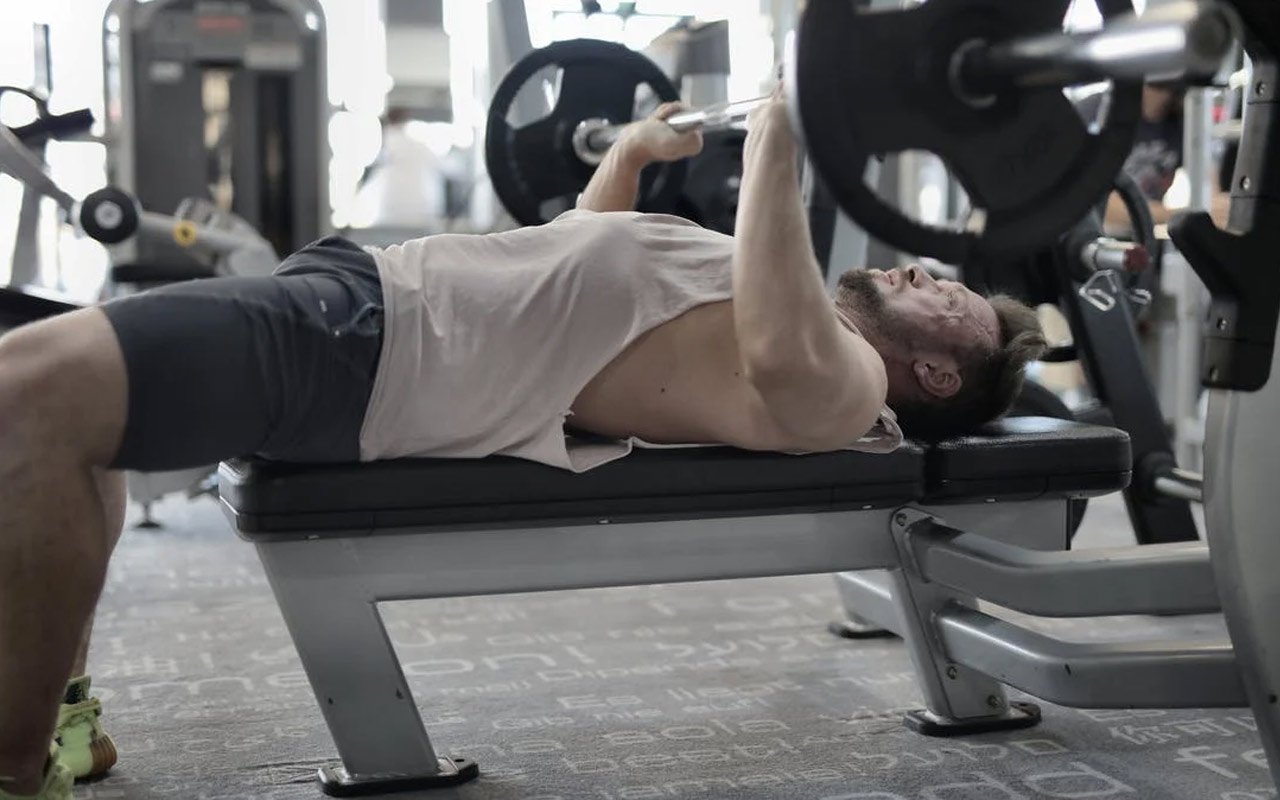
Mondays are internationally known for their chest day. Most guys know that shaping and shaping their chest will make them look more toned. Benching is more than just a way to look good. Pushing will make it easier to lift and push any object in your day, including barbells and broken-down cars.
Many lifters desire big chests. In their quest to build bigger and thicker pectoral muscles they often overlook the upper chest. Because you can lift more weight, traditional dumbbell flyes and flat bench presses can be very effective in increasing your chest mass. If you want a polished, complete look, dedicated upper pectoral training should be part of your routine.
Gunter Schlierkamp is a professional bodybuilder who strongly believes in balanced pec training. Flat benching is important for developing your chest, but he believes that you can improve your upper chest by attacking it with the same intensity as other parts of your body.
These are Schlierkamp’s top six tips to increase the size of your upper pecs.
Always start with inclines
Schlierkamp states that incline moves are the best way to get your upper pecs moving if they are really tired. This can be done with dumbbells, a Smith machine, or a barbell. Inclines will allow you to use the fibers that are not being used at the beginning of your workout. This will enable you to lift the most weight to stimulate growth. You can then move on to flat or decline moves where you are likely to be naturally stronger.
Try Power Pressing
This is the deadlift. The deadlift is a movement that you do without any momentum or elasticity. You pull the bar off the floor and work hard to get it back up. The positive portion of the movement builds strength and power quickly. The same idea is power presses.
He says, “Set the safety ties on a Smith machine/power rack to a point that allows only a partial range for motion.” “As the bar comes down, let it settle completely before pushing hard to the top of your movement.”
You will get stronger as you move through every range of motion. As you do, reduce the safety pins.
Dumbbells
Schlierkamp says that dumbbells can give you a different type of tension and range than a barbell. “Don’t be tempted to use the barbell on inclines or at all with any other angles.
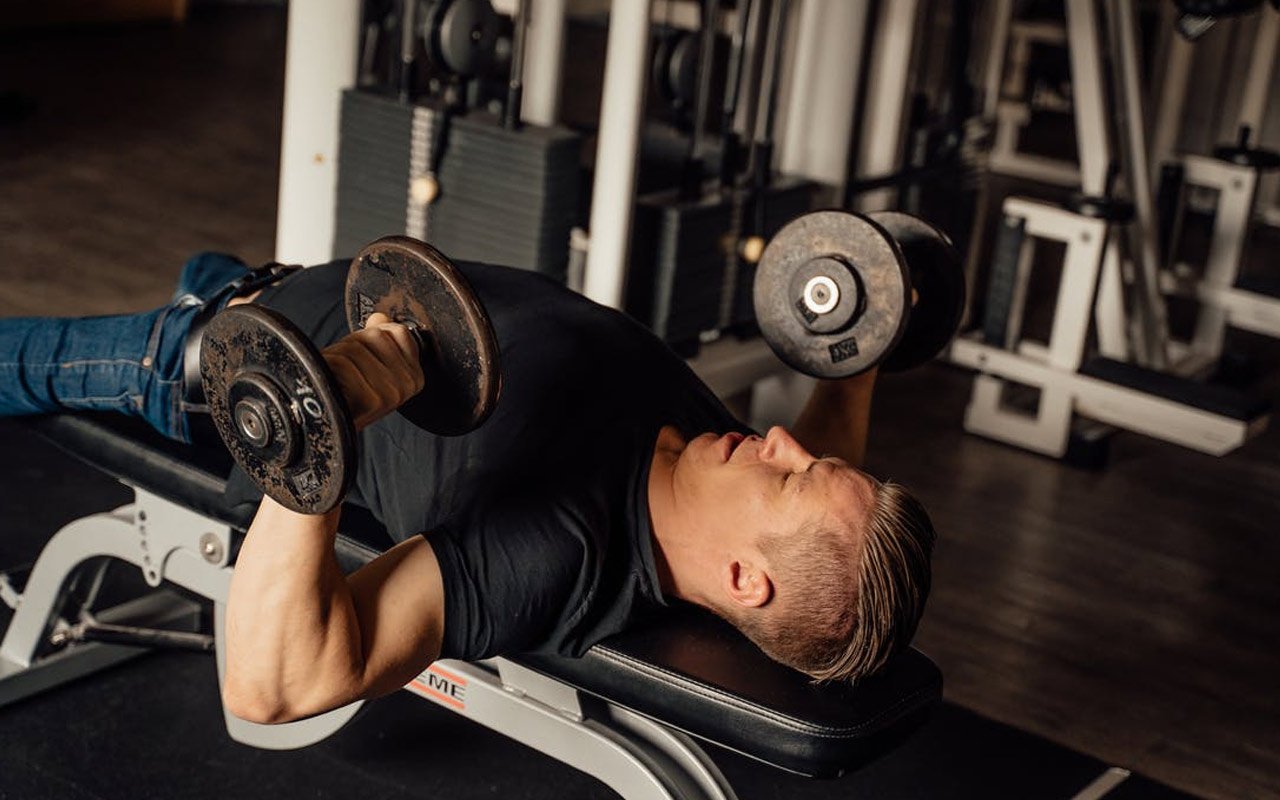
You can tweak your flyes
Incline dumbbell flyes can be used to add mass to your upper chest and to “etch” your muscle. Schlierkamp performs a variation in which his palms are pronated (palms facing away) during the entire movement. The front delts are a little more involved in this variation, but Schlierkamp says that facing the palm forward gives you better tension and stretches your upper pecs.
Keep your head high on the Pec Deck
Pec decks and similar flye machines allow you to blast your inner chest and stretch your entire pectoral system. Schlierkamp recommends keeping your elbows parallel to the ground. This allows you to use the upper pecs.
Stretch to Fit
Stretching after a workout is more than lip service. It will help with muscle growth, recovery, and even maintenance. Gunter states that stretching after a hard day at work is crucial. Gunter says that giving your upper pecs a stretch after a hard day will create the right environment for growth, especially if they have been undertrained.
Get a bigger chest at home
Many people believe that to build a bigger chest, you need to go to the gym or use the equipment. You can actually do many exercises at home or outside without any weights. Your body weight is your tool.
Building chest muscles don’t need to be difficult. Let’s go back to basics with these five bodyweight exercises that will provide you with excellent results at home.
Target muscles groups: chest, arms, and shoulders.
Push-ups
Push-ups are an excellent exercise for your arms and chest. Push-ups are a great exercise that you can do anywhere, anytime. All you need is a firm surface.
Push-ups require several muscle groups to be effective. Unlike other exercises that require weights, the push-up works for smaller muscle groups and uses them in stabilizing. Even though your chest is the primary target, this means your hip flexors and core are also affected.
Decline push-ups
The decline push-up, which is more difficult than the basic push-up, is an additional challenge. You can make the task more difficult by placing your feet higher than your hands. You will get better results if your bench/chair/box is higher than your feet.
Diamond Push-ups
Another variation of pushups is the diamond push-up. This involves placing your hands together so that your index and thumb fingers touch, creating a “diamond shape”. This position of your hands while performing push-ups can slightly affect the muscles involved. Your triceps, inner chest muscles, and inner thighs will be more affected.
Push-up hold
Push-up holds are an isometric (held) exercise that will increase your chest strength and definition. It will also strengthen your core, shoulders, and arms. The push-up hold will make you stronger physically and mentally.
You need to keep the push-up position (lowered down) as long as possible. If you think doing push-ups is difficult, just think about how hard it is. It is important to believe you can do it, and push yourself to the limit.
Push-ups with large arms
Push-ups done in a wide position will also put more pressure on your chest. Because most of your weight transfers to your chest muscles (pectoral) when your hands are in a wide position. Your chest will be more challenged the further you extend your hands.
To lift your body, do wide push-ups. This will increase your strength and help you lift your arms.
16 Best Exercises For A Bigger Chest
A chest workout for most men involves performing three types of chest exercises: flat, incline, and decline bench press. It doesn’t have to be this way.
There are many options for chest exercises, including bodyweight staples and twists on dumbbell favorites, so building a strong pair of pecs doesn’t have to be difficult. Mixing up your workouts will allow you to hit your chest from many more angles than the bench press can. This will give you a stronger upper body, which will make it easier to push heavy objects, from cars and barbells.
We also know that a bigger chest is a part of why you are reading this guide. This is a scientific fact. A study published by Plos One showed that both men and women perceive a masculine body as having a large chest that is muscular. This creates a V-shaped torso. To help you build a strong set of pecs, we have consulted chest exercise specialists.
This guide and workout for bigger chests are ideal for anyone looking to bulk up their upper bodies. It is best suited for guys at intermediate levels who have experience with bench pressing, cable machines, and supersets. To increase strength and speed, you can also use the progressive overload technique, which involves adding reps to each workout cycle. If you are unhappy with your current workout results try these moves.
These are 16 exercises that will take your chest growth to a new level:
Dumbbell Squeeze Press
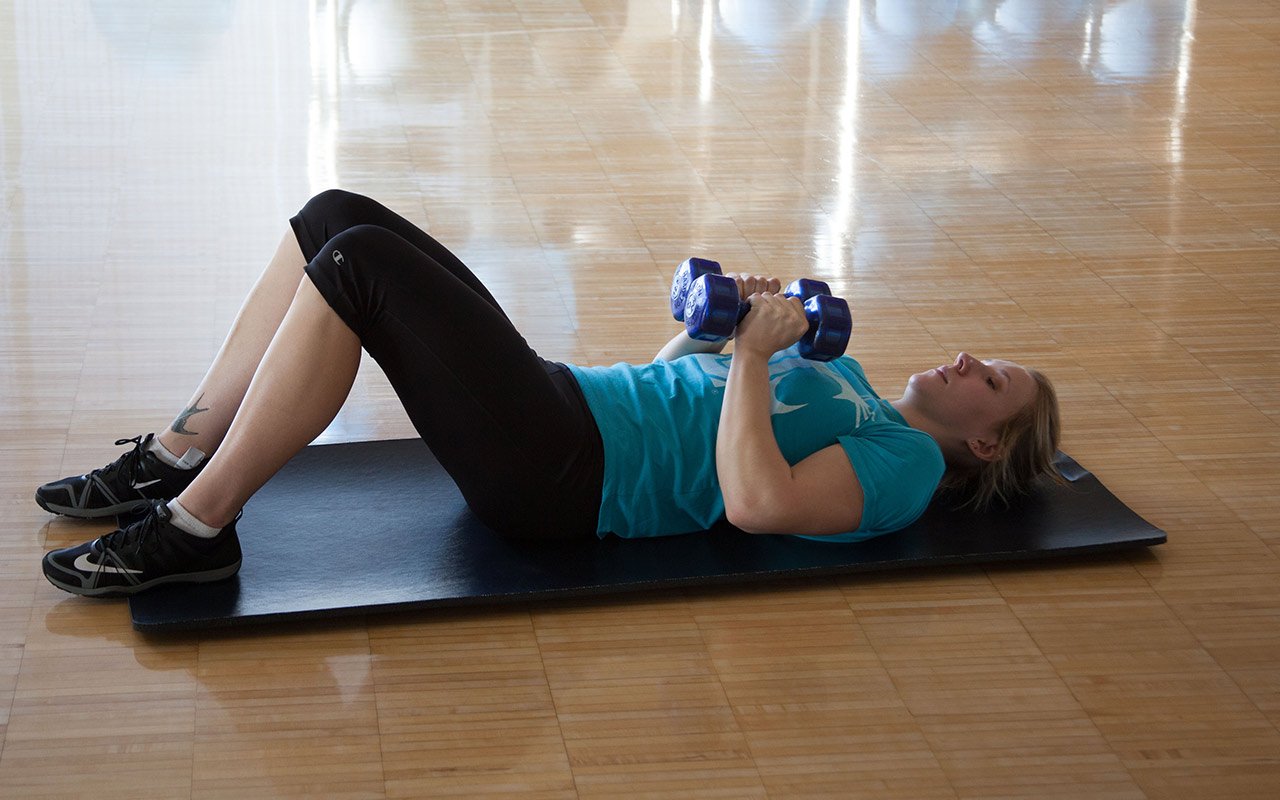
When you do a chest press, squeeze the dumbbells together to bring the focus onto your pecs. This simple trick engages the dumbbells throughout their entire range of motion, which is key to maximizing muscle gains.
Place a dumbbell in each of your hands on a flat bench. Keep your hands neutral and place your arms straight above you. Lower your dumbbells to your chest by bending your arms. To continue, pause and raise your arms.
Incline barbell bench press
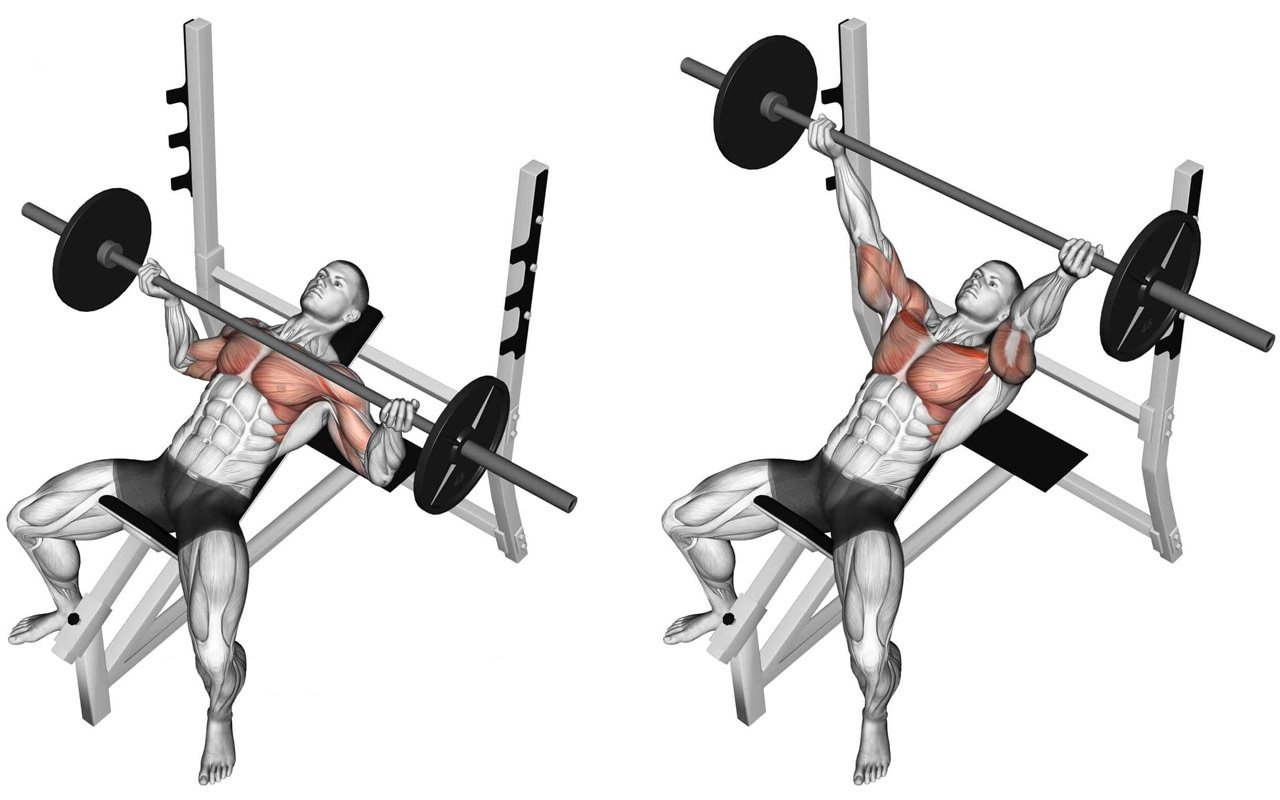
The clavicular head is activated when you press on an inclined set-up. This is why the incline bench press will make your pecs pop.
Place your hands on the bench at an angle of about 45 degrees. Now, lift the barbell up to shoulder height. Keep your palms in front. As you exhale, press your arms up with both hands. Now, lock your arms and press your chest into the ground.
Incline dumbbell bench press
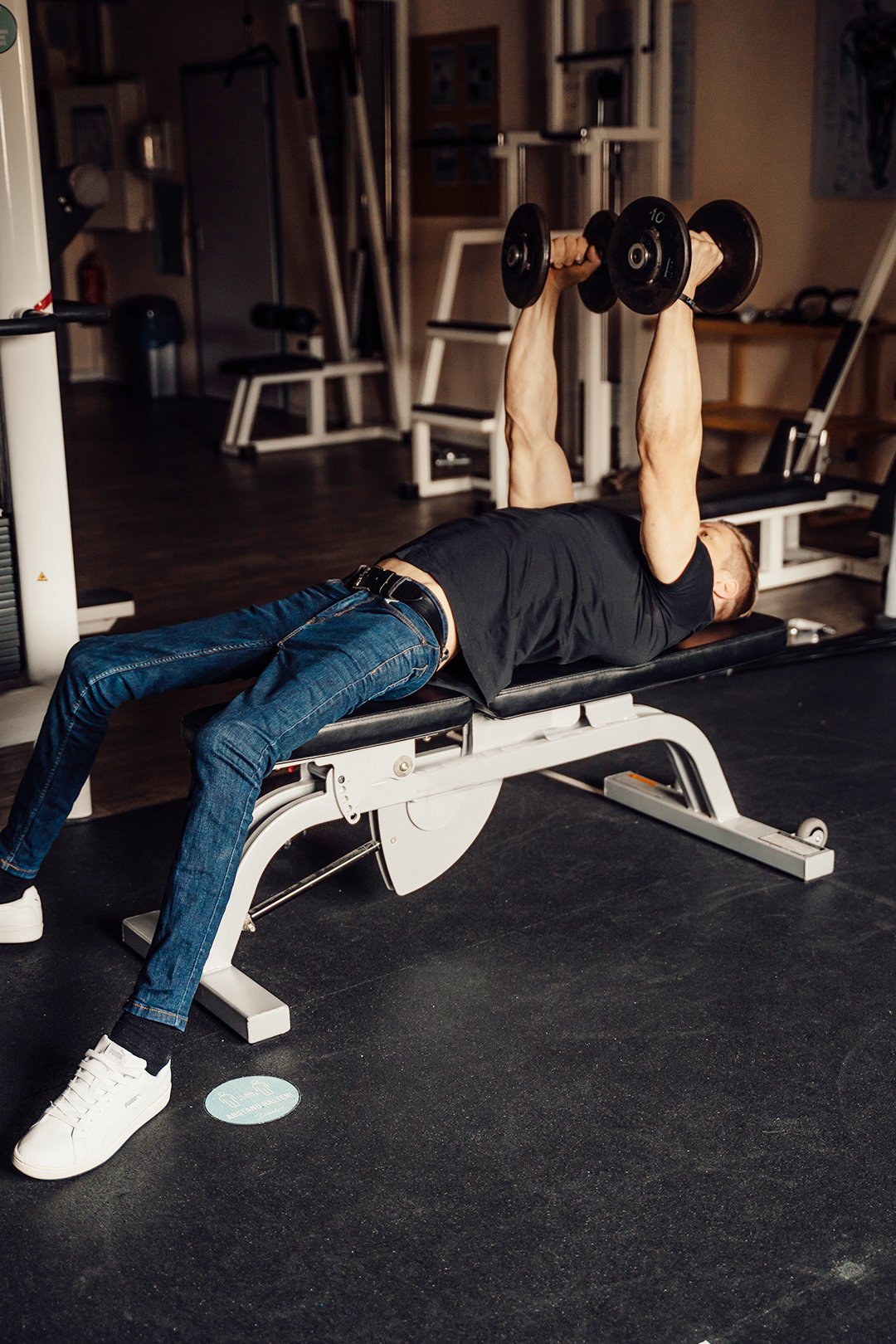
Why? While the bench press is a classic for chest building, dumbbell presses can offer different variations to help you build more chests. You can move more freely and activate more stabilizing muscles by using two different weights.
To make it more difficult, lift the weight to the top and then lower the opposite side. This will keep your chest in tension.
Place your hands on the bench at a 45-degree angle. Now, lift the weights to your chest. Keep your palms in front of you. Slowly lower one of the weights, then push it up again and squeeze your chest. Continue with the opposite side.
Close-grip barbell bench press
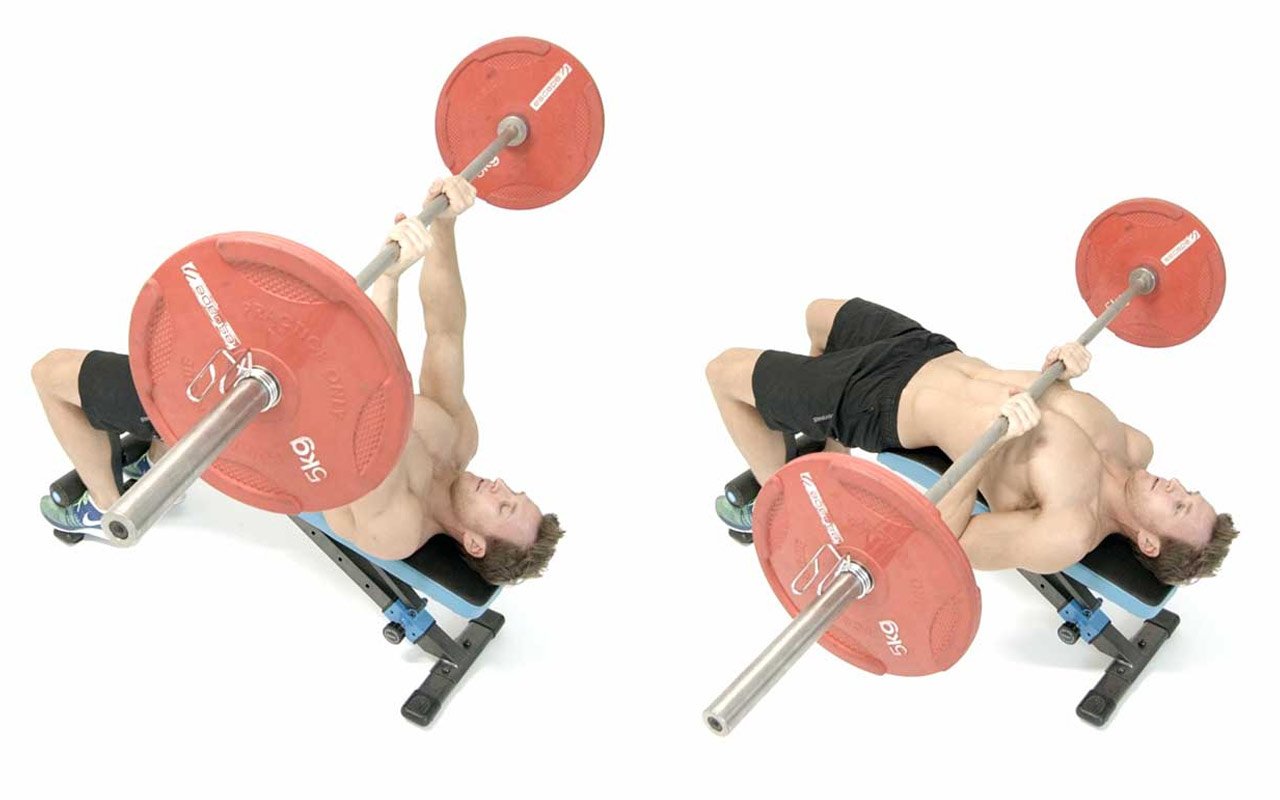
Close-grip bench presses place less stress on your shoulders and shift the focus to your chest and triceps. Your hands should be just below your shoulders.
The Barbell Flat Bench Press
Because it is one of three lifts that are judged in a competition, it has direct transfer to powerlifters.
The bench press works muscles in the chest and triceps as well as the shoulders. This will help you build a strong torso.
You can lift the bench press with a heavier weight than other chest exercises.
Place a barbell on a flat bench and hold it with an overhand grip. Breathe in slowly and gradually lower the bar until it touches your chest. As you exhale, push the bar back to its original position. Your chest muscles should be used to push the bar back towards its original position.
Decline press-up
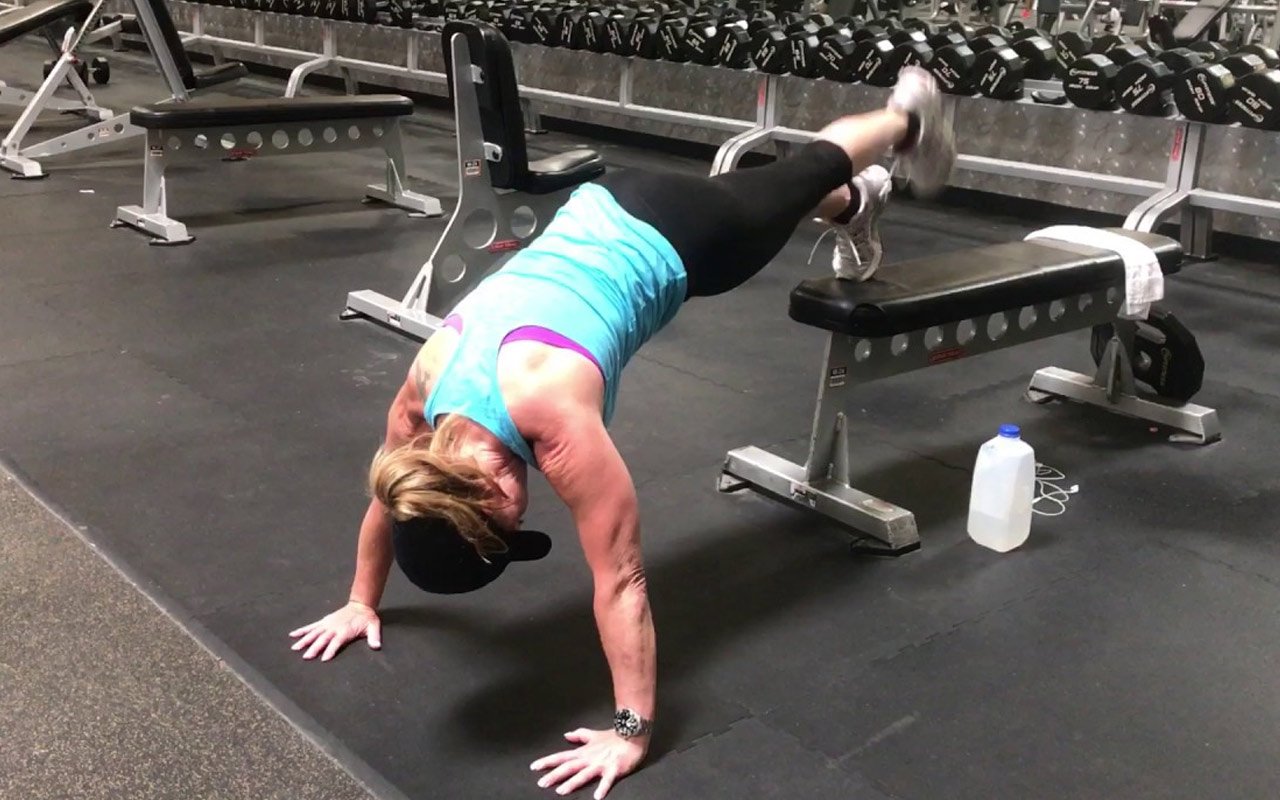
Decline bench presses focus muscle-building on your lower pectorals. This helps you to build a more defined chest.
Place your feet on the bench and your hands on the ground in front. Your chest should reach the floor, so lower your body. While squeezing your chest, press your body back to the original position. Before you continue, pause briefly at the top.
Cable Fly
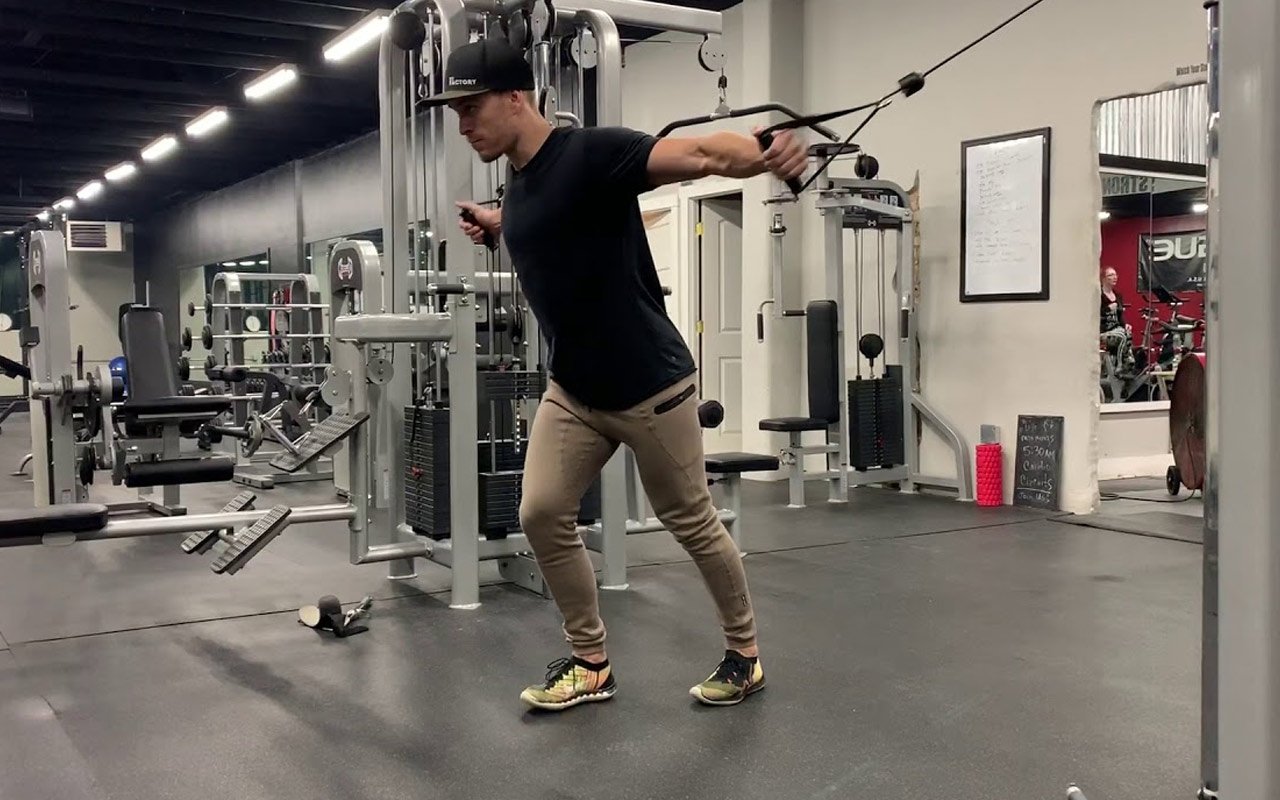
Instead of pressing, give your pectorals and deltoid muscles a new stimulus. To maintain constant tension, attach the cable fly to your chest every day.
To attach stirrup handles to high pulleys on a cable crossover machine, use stirrup handles. One should be in each hand. Your arms should be bent slightly with your arms outstretched. One foot should be slightly forward. Brace your core and pull the handles down and across your body. Restore control and return to the original position.
Decline barbell bench press
The Barbell Decline Benchpress
The angle of the bench that you are lifting off is what causes the decreased strain on the shoulder joint.
The lower pectoral fibers are more important.
A decline bench can help you zero in on your lower chest and build significant size.
With your arms extended and your palms facing you, hold a barbell. Then, place your back on a low-inclined bench. Begin by extending your arms and placing your hands on your chest. Next, lower the bar until it touches your chest. As you exhale, push the barbell back into its original position.
Staggered press-up
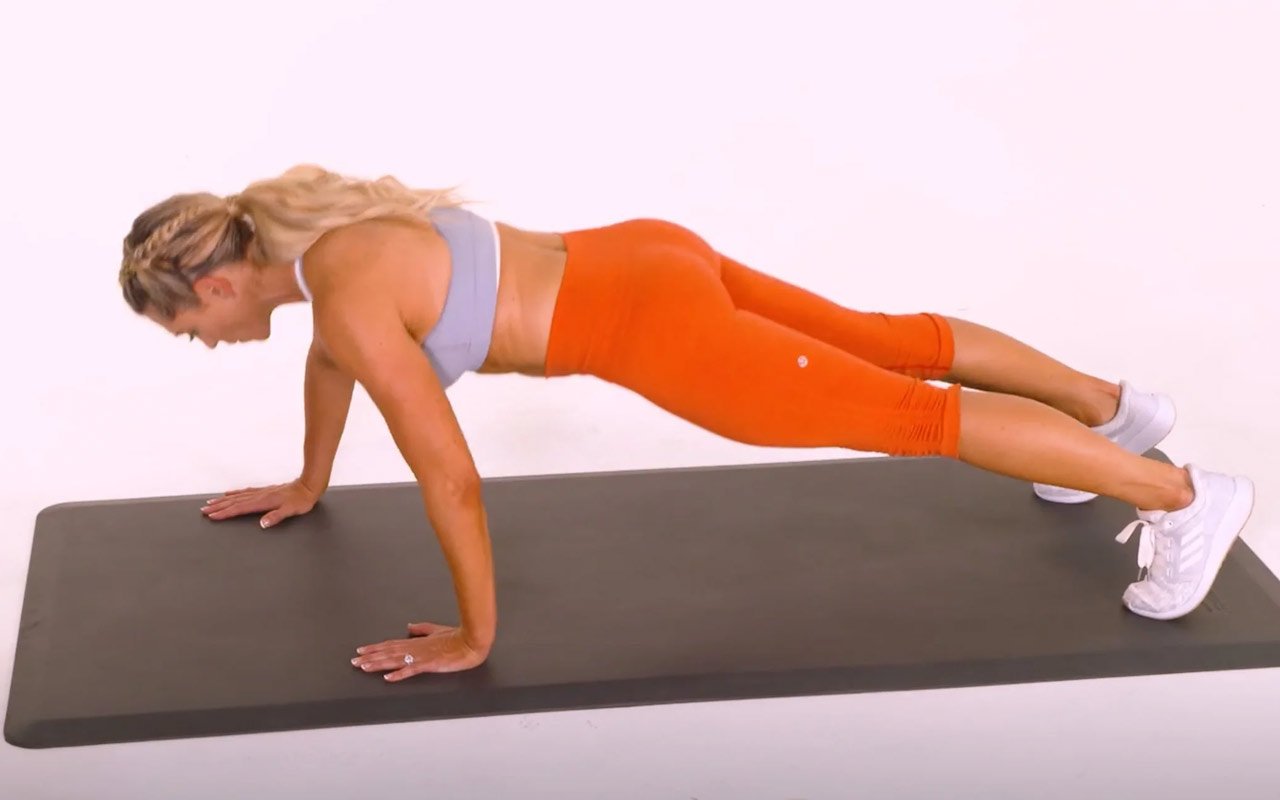
If you already know how to do press-ups, this is a great way to learn how to do the one-handed press-up.
How to do it: Press up with your hands spread out, so that your right side is farther forward than your left. Drive-up explosively by lowering your body to a point where your chest touches the ground. Move your hands to the side and then switch your positions so that your left leads.
Chest dips

Dips are a great way to lose chest fat and tone your man boobs. Dips work the upper body. They also target your upper back, arms, shoulders, chest, and upper back. You’ll feel a surge of hormones as you descend. Your body will be trying to stabilize itself in space.
With your palms facing inward, grab the dip station bars with your arms straight. Slowly lower your elbows until they are at the right angle. Keep them tucked against you and not flaring out. Continue to drive yourself up to the top.
Clap press-up
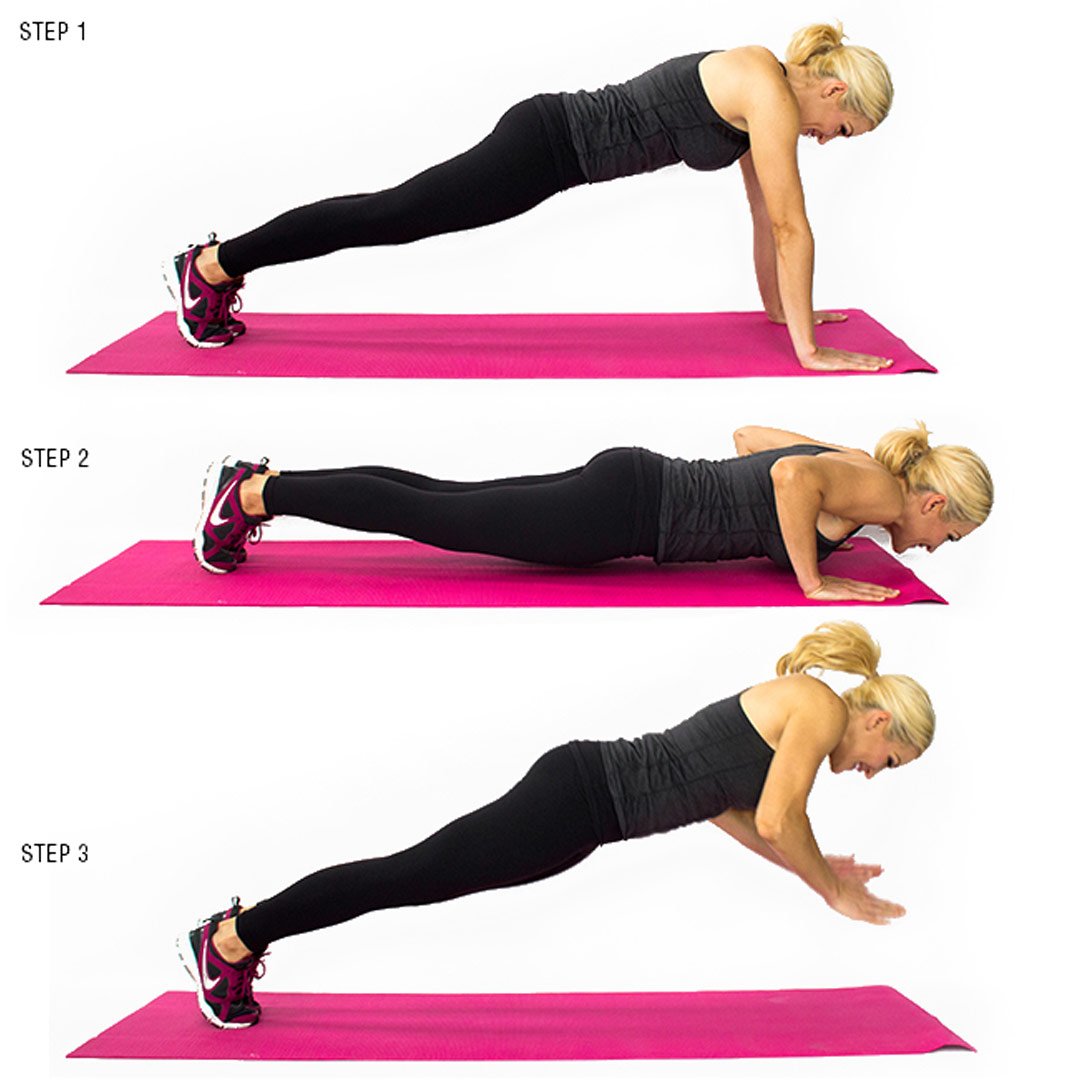
This plyometric version of the classic bodyweight exercise will saturate your fast-twitch muscles and prepare them for growth.
Push-up, up with your hands in front of your chest and your feet shoulder-width apart. Your body should form a straight line running from your head to your heels. Your core should be braced. Your chest should be lower than the floor. Next, press down explosively to get your hands off the ground.
Chest Flye
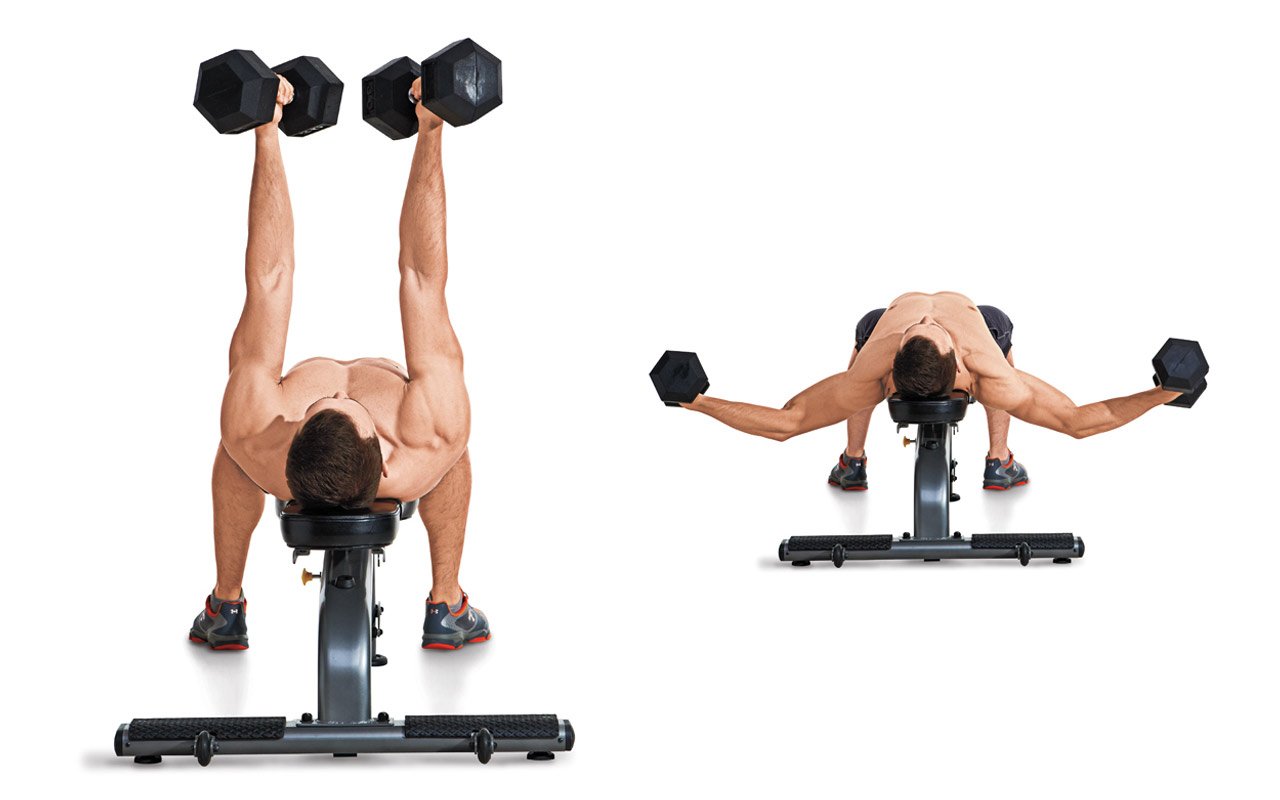
The chest flye, which can be done using dumbbells or a cable machine, is a popular exercise for bodybuilding to increase muscle strength and stretch.
The pump will drive nutrient-rich blood to the area in order to speed up recovery. Because you can’t stabilize each weight individually, dumbbells will help your body coordinate better.
Benefits
As the lifter must balance and lift two dumbbells at once, it requires more muscular coordination.
The chest flye stretch is done by stretching the arms using lightweight. It will tax the chest’s muscles and pump the area full of nutrients.
This is a versatile move that can be done with dumbbells on a cord machine or kettlebells.
How to Do the Chest Flye
With a dumbbell in one hand, lay back on a flat or decline-looking bench. Slowly and controlled, bend your elbows slightly to lower your arms. Then, turn the motion around to engage your chest. It should appear that you are hugging a tree.
Push-Up
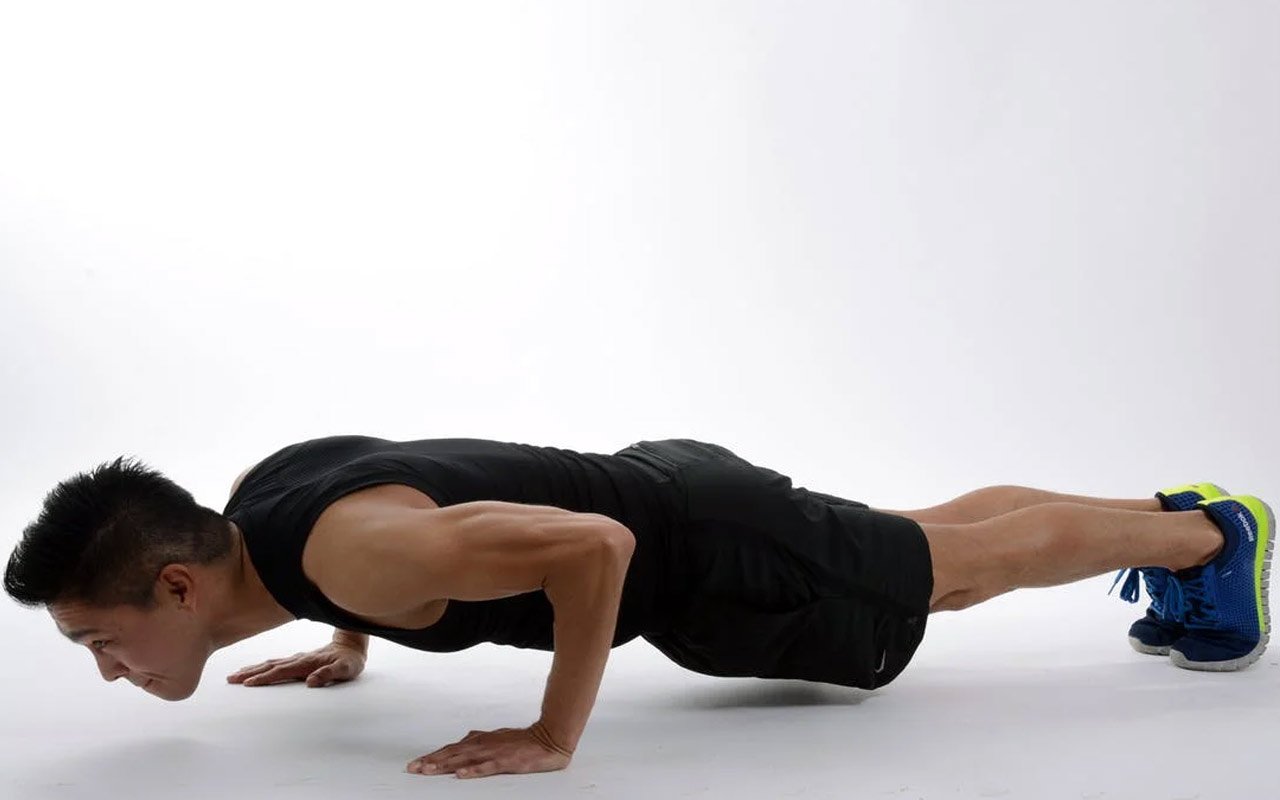
We don’t need to convince you about the push-up. Although it’s unlikely, we don’t need to sell you on the push-up. However, we do have a training resource that will help you understand why the push-up is so much easier for your joints than other exercises.
You will likely notice an increase in upper body strength if you do push-ups regularly. Push-ups are considered one of the most effective weight loss exercises. It strengthens not only the pectoral muscles but also the triceps and deltoids. Push-ups also help strengthen your entire core.
To a certain extent, push-ups even work your glutes, quads, and small stabilizers in your upper back.
Most muscles work best with around 8–25 sets per week, starting with 2–5 stretches. Push-ups are no exception. If you’re doing more than 20 push-ups a week, you’re doing too much and are actually reducing your body’s ability to build new muscle mass.
It would be a shame if we didn’t mention that push-ups are relatively safe and can increase muscle volume. It wouldn’t be cool to leave those details out.
Benefits
Your joints won’t feel as stressed if you work out with your body weight only.
Pushups can be done a lot, which will increase muscle-building tension.
How do you push-up
Place your hands under your shoulders and hold onto your feet. Your palms should be pressed to the ground. Your chest should tighten. Keep this position and slowly lower your chest until it touches the ground. Continue driving up using your palms.
Dip
Another bodyweight treasure is the dip. The dip is a different bodyweight exercise than the push-up. Instead of being on your back, the dip puts you on your toes. Your triceps will be a major focus of the dip. They are involved in all pressing movements. Therefore, working together with your chest will strengthen the synergistic muscles.
Benefits
You will strengthen your triceps, pecs, and other pressing muscles.
This will allow you to use 100 percent of your body weight. It’s far more than the amount that you would lift in a push-up.
How to Do the Dip
Grab the dip bar tightly and place your upper back in the dip position. Keep your shoulders together and your elbows straight. Your torso should be slightly in front. The elbows should bend slightly towards the sides. Your elbows should bend at 90 degrees. Once you are ready, push through the handles to bring your body up to the top of the dip position.
Svend Press

Ironically, the best-looking exercise on our best chest list will likely burn the most calories (we mean the best). You must squeeze the weights together constantly to avoid losing two plates. This alone will activate your pectorals.
Next, extend your arms and squeeze your chest even further. Svend pressing (or plate pinch), is safer than heavy pressing because it has a low impact. You don’t have to wait for the International chest day bench to open to use this press.
Benefits
A pressing movement that doesn’t require you to wait for others to finish their bench presses.
For serious muscle hypertrophy and pump, the squeeze and press combination is a great way to create tension.
How to Do the Svend Press
Begin by taking two small weight plates (5 or 10 lb) and pressing them between your fingers. Your arms should be extended in front of your face.
Keep the plates in place by pressing down on the edges. After bringing the plates to your sternum, flex your chest and push the weights backward. Make sure you keep the plates tightly pressed and engage the inner chest muscles.
Cable Iron Cross
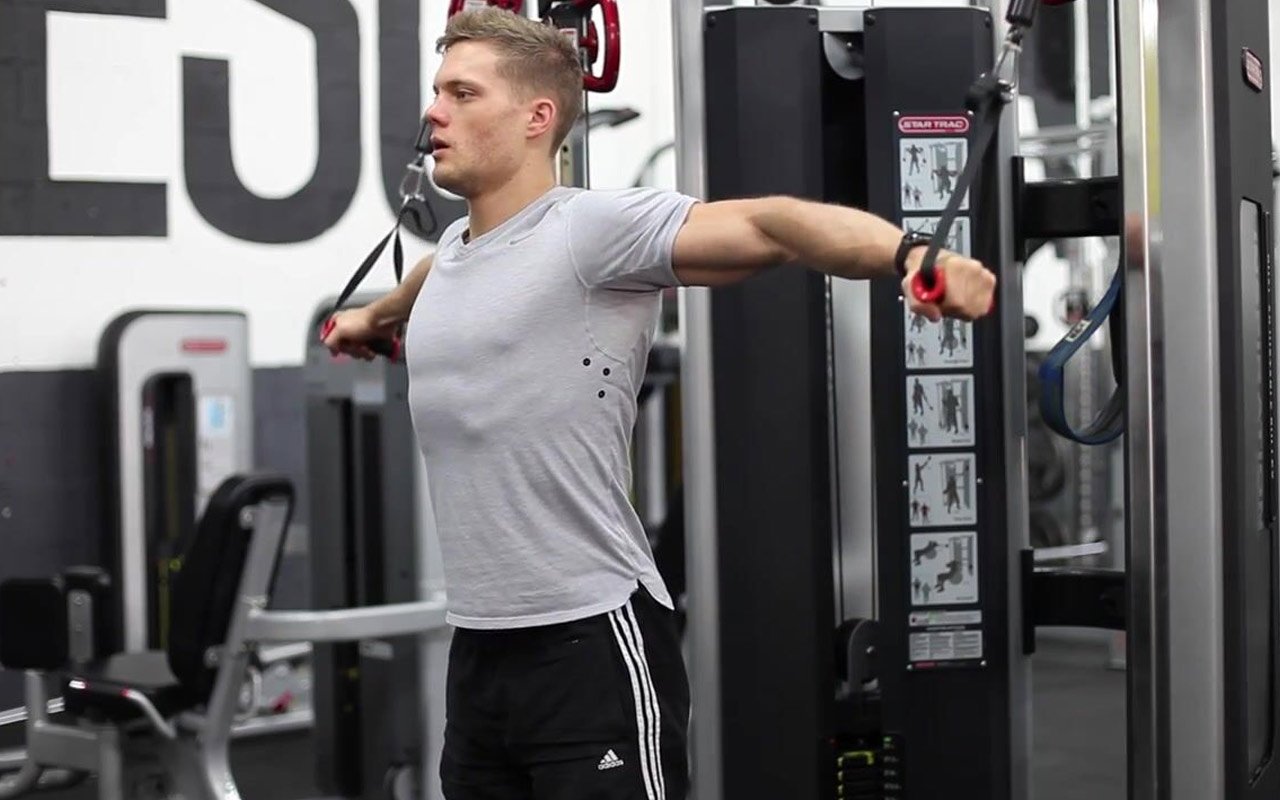
While the iron cross is a classic in gymnastics, it can also be a great exercise for body development when done in a cable tree. The exercise is great for building chest strength and stretches your chest muscles right from the beginning. It also allows you to move through a wide range of motion, which can be beneficial in chest building. Your muscles will also be hypertrophied because of the continuous tension from the cable machine.
Benefits
For better muscle-building potential, keep tension on the muscles.
The dumbbell version isolates and moves the lower chest muscles more than the dumbbell variant.
For better definition, train the lower chest area that is difficult to reach.
How to Do the Cable Iron Cross
Place the handles at both ends at the highest point of the cable machine. Take both handles and stand in the middle with a straight stance. Keep your spine neutral, lean forward, and bend your elbows. Keep your core tight and pull the handles across your body. Finally, squeeze your chest muscles.
Chaos Push-Up
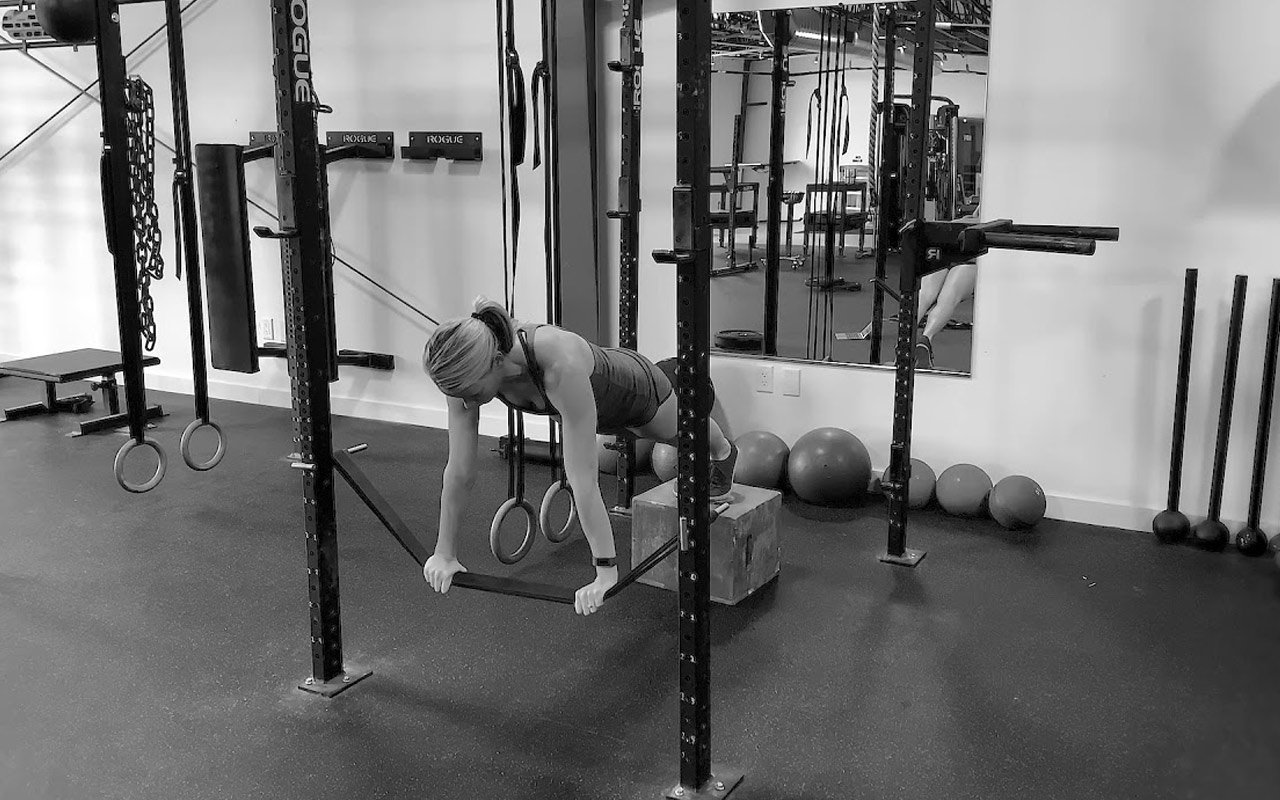
You can also use resistance bands to increase your chest size. You can do a variety of exercises by looping a heavy metal band around a squat rack. While performing a push-up, the unstable resistance band activates all of your stabilizing muscles.
The band will instantly give feedback if you aren’t in perfect form. The increased tension can help build your chest.
Benefits
Additional rotator cuff recruits can be made by the Chaos Push-Up’s instability.
This increases core stability and control in your push-ups, which results in increased tension.
Band training activates the small stabilizers (shoulder and core) while improving proprioception.
How to Do Chaos Push-Up
Loop a thick, heavy-duty band around your squat rack. The higher up the band, the more difficult the exercise. Lower the band. It makes it more difficult. Hold the band with your hands in a shoulder-width grip. Keep your legs straight and engage your core. Then, slowly lower your body into a push-up position. Push up against the band.
Variations of push-ups like decline push-ups, plyometric push-ups, wide push-ups, … are exercises for a bigger chest without equipment. In addition, there are other home exercises with fitness dumbbells: dumbbell squeeze press, biceps curl, dumbbell lunges… If you can’t go to the gym or don’t have support equipment, you can try the top 10 chest workouts at home below:
- Decline Push-ups
- Diamond Push-ups
- One-leg Push-ups
- Off-set Push-ups
- Standard Push-ups
- Slightly Easier Push-ups
- “Spider-Man” Push-ups
- Shuffle Push-ups
- Plyometric Push-ups
- Wide Push-ups
Chest Workouts to Increase Chest Muscles
We’ve given you some great tips for getting bigger chest muscles. Are you ready to start a workout program?
Two different workouts will be created for you. They should last at most one week. You can mix and match it to your needs.
These are not going to be counted so you don’t work your muscles to death. To determine your maximum weight, you should do at least six reps.
If you’re up for the challenge, try this as a superset. Each exercise requires three sets.
Workout 1 for a bigger chest
Warm-up for five minutes: running, jumping jacks or planks, squats, or whatever else you like
- Push-ups
- Bar dips – these can be weighted if this is more challenging for you
- Remember John’s tips about barbell bench pressing
- Side push-ups
- Dumbbell flyes
- High-heeled cable flying – Breon’s tips are important
- Cooldown stretches
Workout 2 for a Bigger Chest
- Warm-up for five minutes
- Push-ups with large arms
- Cable crossovers
- Elevated push-ups
- Incline dumbbell press
- Bar dips
- Pectoral stretch: Stand with your hands on each side of your lower back and place your palms on your chest. Pull your chest forward and pull your shoulders back. Then, push your hands towards your lower back. Do this at least two times, and stretch for 30 seconds.
- Cooldown stretches
Summary
There is no quick way to increase your chest size. To see lasting, real results, you need to put in the effort and work hard.
Try these exercises if you feel your chest is not defined enough. Remember to eat well, get enough sleep, take plenty of rest between sessions.
Before you do any exercise, make sure you are familiar with the correct form and technique. Don’t rush and take your time. Instead, focus on each rep.
These tips will help to increase the size of your chest.

